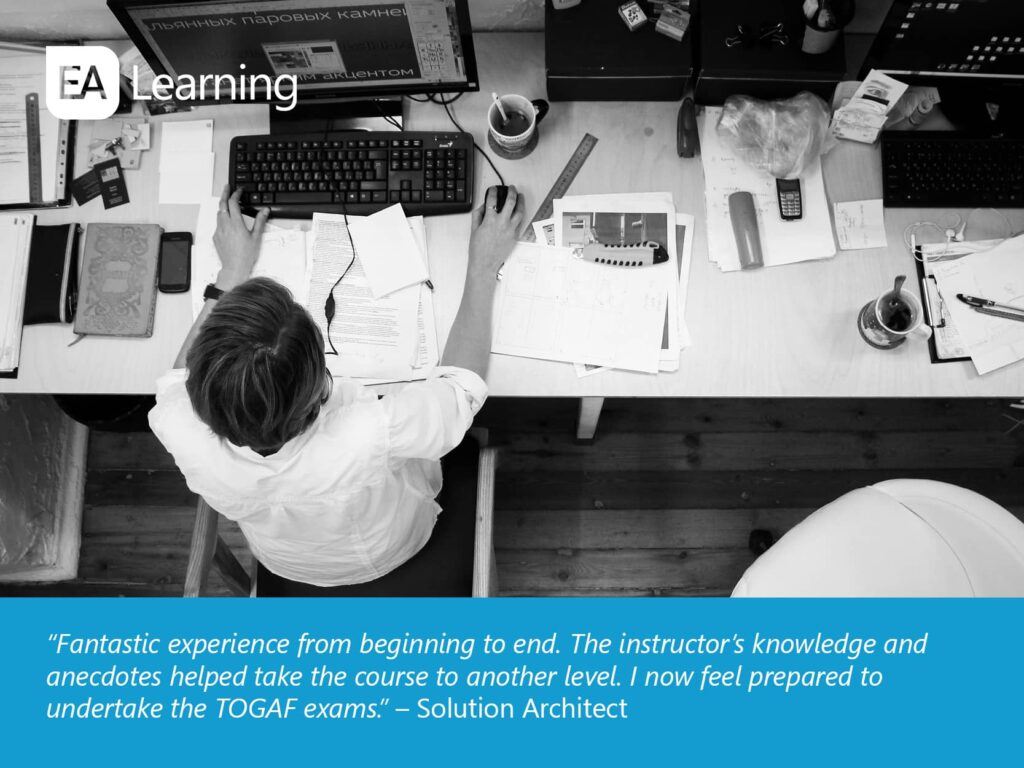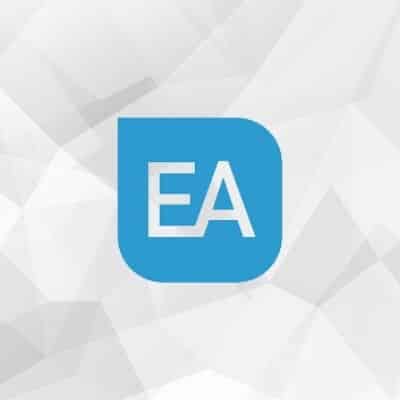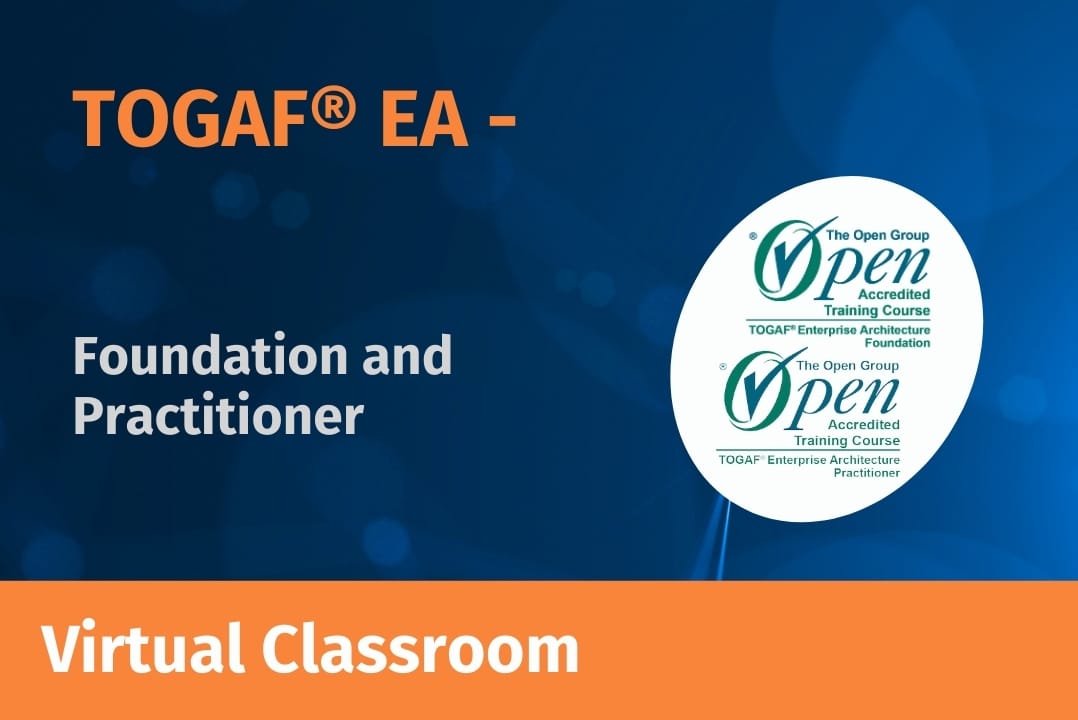Enterprise architecture is the foundation of business strategy and digital transformation. It ensures that technology, processes, and business objectives align seamlessly. So why do 80% of Fortune 500 companies use The Open Group Architecture Framework (TOGAF®)? (The Open Group). The answer lies in its ability to reduce complexity, streamline operations, and future-proof IT investments.
The latest TOGAF® Standard, 10th Edition, builds on this framework, making it more practical, adaptable, and accessible. If you are an IT architect, business leader, or transformation specialist, mastering TOGAF® is not just about certification, it is about gaining a strategic advantage.
EA Learning: The Leading TOGAF® Training Provider
When it comes to TOGAF® training, EA Learning is a trusted TOGAF® training provider who works with major banks, Fortune 500 companies, and government agencies. Our expert-led courses go beyond certification preparation, equipping professionals with the skills to apply TOGAF® in real-world business scenarios.
Looking to leverage TOGAF® for your career or organisation? Here’s what you need to know.

Understanding the TOGAF® Framework
At its core, TOGAF® is a structured methodology for designing, planning, implementing, and governing enterprise architecture. It provides a repeatable framework to ensure that IT strategies align with business needs.
Who Uses TOGAF®?
TOGAF® is the preferred architecture framework for a wide range of industries:
- Large Enterprises – Ensuring scalable, flexible IT infrastructure.
- Government & Defence – Enhancing security, compliance, and interoperability.
- Financial Institutions – Driving efficiency, risk management, and regulatory alignment.
Four Pillars of TOGAF® Architecture
- Business Architecture – Defines how business strategy, governance, and operations align.
- Data Architecture – Structures how data is stored, managed, and accessed.
- Application Architecture – Maps out how systems interact and integrate.
- Technology Architecture – Covers IT infrastructure, cloud, security, and emerging technologies.
Why is TOGAF® Important?
TOGAF® ensures that IT investments deliver real business value, eliminating misalignment between IT and organisational strategy. Learn more about TOGAF®, in depth, via our courses which provide case studies and practical insights for immediate application.
Why the TOGAF® 10th Edition is More Practical
TOGAF® has evolved to meet the needs of modern enterprises. The 10th Edition enhances the framework with a stronger emphasis on practical application, agility, and digital transformation.
What’s New in TOGAF® 10?
- Expanded Practical Guidance – Easier implementation in Agile and Digital Enterprises.
- Modular Structure – A split between Fundamental Content and Series Guides, allowing for customisation based on business needs.
- Better Integration with Agile, DevOps, and Cloud – Aligning enterprise architecture with contemporary business and technology methodologies.
Organisations today demand agile, scalable, and responsive architectures. TOGAF® 10 provides the tools to ensure seamless integration between business and IT. Register for a TOGAF® 10th Edition course, then bring its principles to life with real-world application.
How TOGAF® Certification Benefits Professionals & Businesses
TOGAF® certification is not just about theoretical knowledge, it is a career accelerator and a business enabler.
Career Benefits
- TOGAF®-certified professionals are highly sought after across industries.
- Certification can increase earning potential.
- Opens doors to senior enterprise architecture roles in global organisations.
Business Benefits
- Enhances IT transformation efficiency, reducing costs and risks.
- Strengthens governance, compliance, and strategic decision-making.
- Bridges the gap between business and IT, enabling more effective digital transformation.
In summary, TOGAF® certification validates your expertise in managing enterprise architecture effectively, making you a valuable asset to any organisation. If you’re considering TOGAF® certification, we provide the best preparation for success.
Why EA Learning is the Best TOGAF® Training Provider
- Preferred by Fortune 500 companies and government agencies.
- High pass rates with FREE exam resit (terms apply).
- Expert instructors with hands-on industry experience.
- Interactive virtual classrooms using Miro for real-world application.
Our training does not just teach TOGAF® theory, it equips professionals to apply TOGAF® principles in real-world enterprise environments. Join the thousands of professionals who have advanced their careers with our TOGAF® training.
The Next Step in Your TOGAF® Journey
TOGAF® is the leading enterprise architecture framework, helping organisations align IT strategy, optimise costs, and drive digital transformation.
- The 10th Edition makes TOGAF® more practical and adaptable to modern business needs.
- Certified TOGAF® professionals are in high demand, with better career prospects and earning potential.
- EA Learning offers expert-led training, interactive learning tools, and a proven track record of success.
Take the next step in your career by registering for one of our TOGAF® certification courses.



 4 day course
4 day course